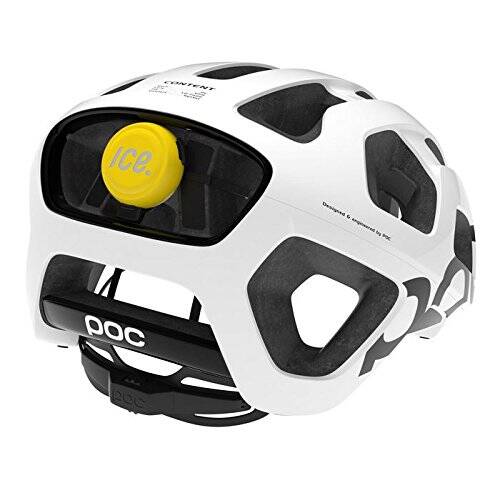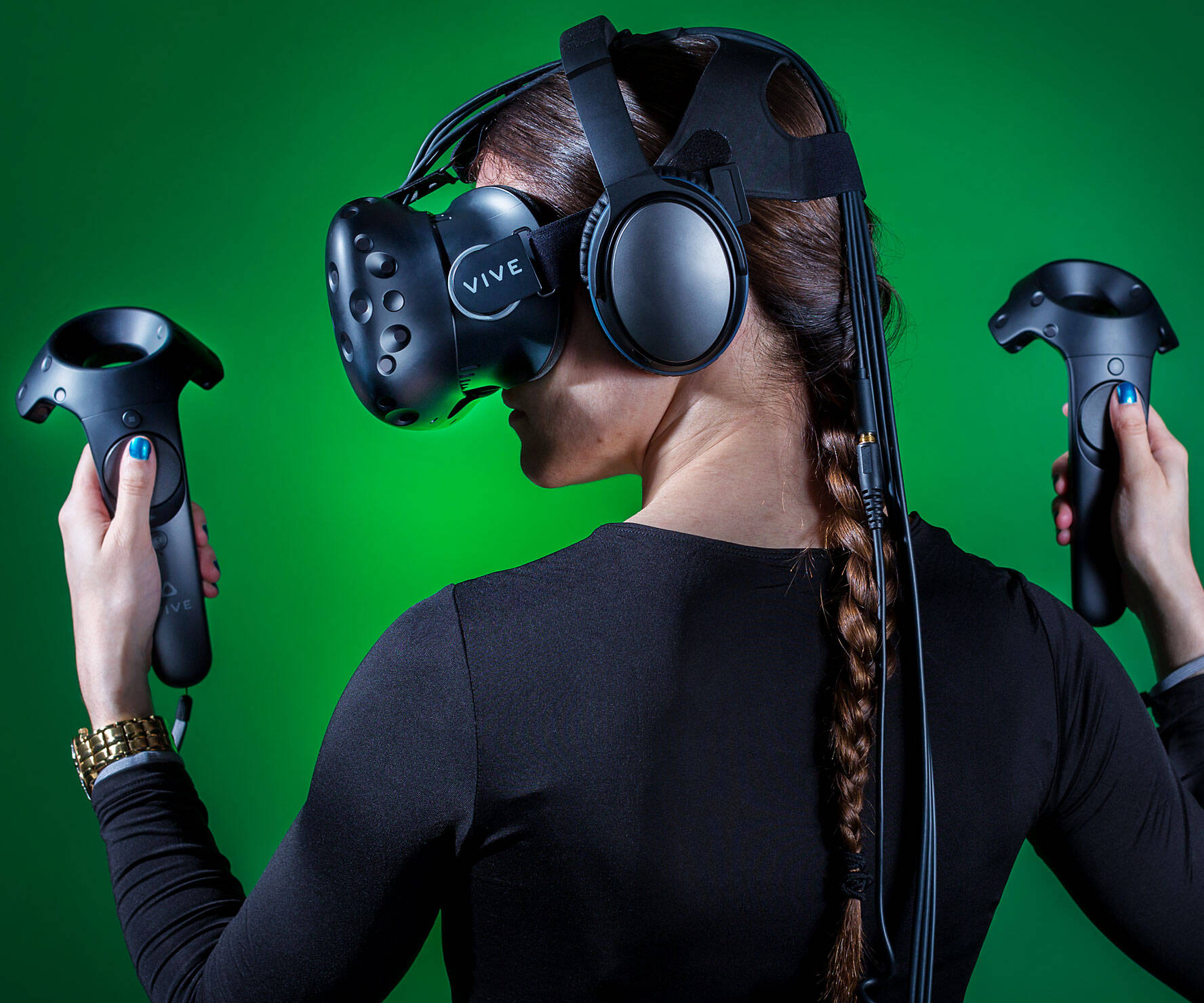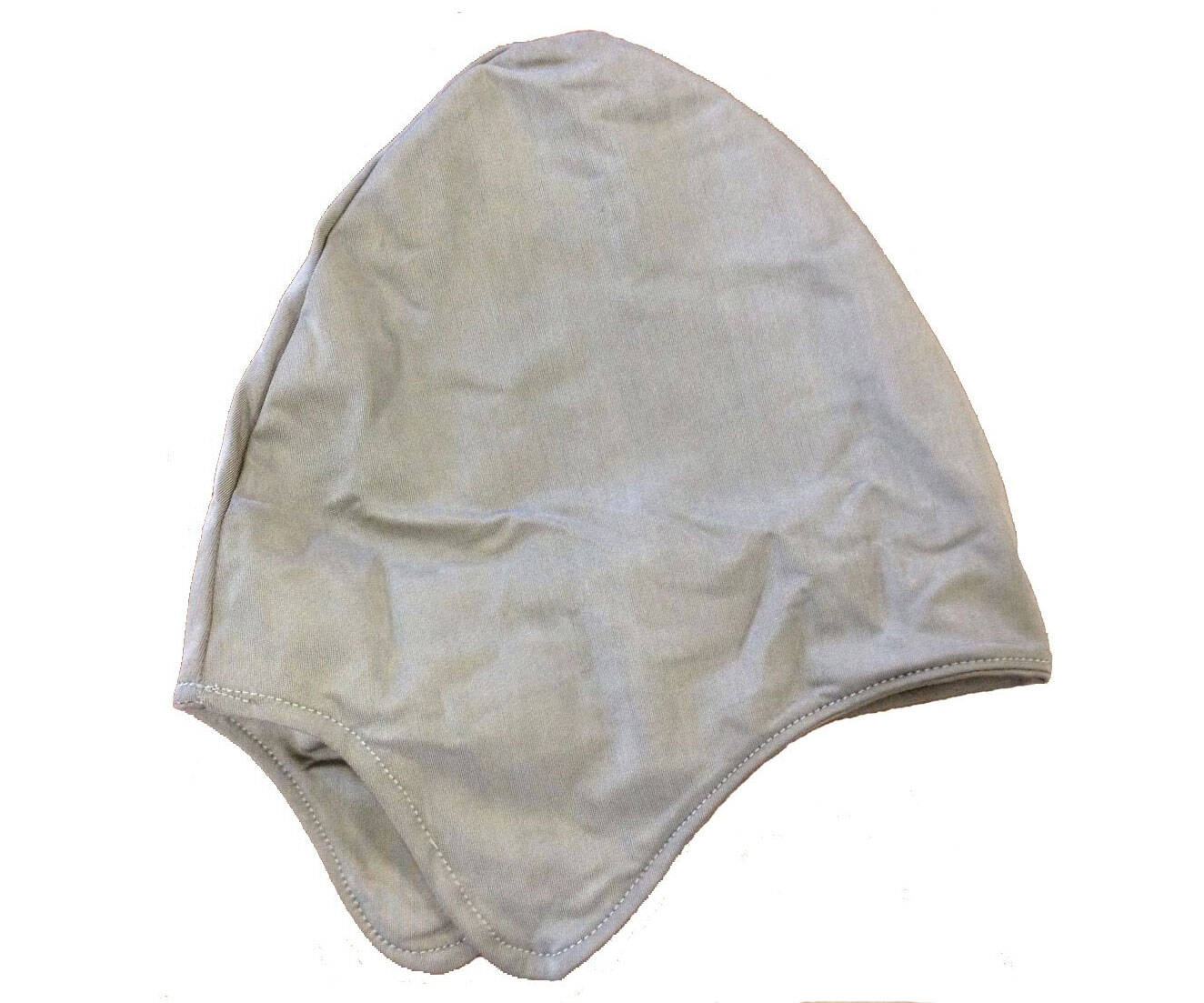ICEdot Helmet Crash Sensor | ||||||||||
| ||||||||||
Product Description
The ICEdot Crash Sensor mounts to any helmet and detects critical impacts that may leave you incapacitated. It pairs with a companion app running on your smart phone over Low Energy Bluetooth. When it detects critical forces the Crash Sensor triggers your phone to sound an alarm and if not disabled, alert your pre-specified emergency contacts over SMS text message and include a link to your current GPS coordinates if available.Phone types currently supported:
iPhone 4S or later (BLE 4.0 Required)
Android phones running 4.3 or later with BLE support.
Includes:
1 ICEdot Crash Sensor
1 helmet mounting clip (adheres or zip ties to helmet)
1 USB to Micro USB charging cable
1 Year Premium ICEdot Membership
Features
- COMPLETE SET: The ICEdot Sensor Crash comes with a helmet mounting clip, zip ties, and a USB to Micro USB Charging Cable.
- LONGER ADVENTURE TIME: With its batteries being rechargeable, you get to enjoy more biking time adventures. It can be used for approximately 20 hours, and stay on standby for around 30 hours.
- BLUETOOTH SMART: This sensor works with the use of Bluetooth Low Energy, to reduce battery power consumption. Your batteries are well kept from draining easily. It currently connects with iPhones, 4s or later and android phones running 4.3 above. (BLE 4.0 Required).
- SAFER RIDE ALONE: With the ICEdot Crash Sensor innovation, you can go alone on treks and exploits with peace of mind. You are sure that your loved ones will be notified in case of emergency, and you are far safer than when no one knows what happens or happened to you.
- GO PREMIUM: When you purchase an ICEdot crash sensor, you are entitled to a 1 Year Premium ICEdot Membership.
Top Reviews
Not a CRASH SENSOR; it's a head trauma indicatorby Dr. Rob (2 out of 5 stars)
August 23, 2014
This is NOT a crash sensor. I repeat, this device is NOT a crash sensor. Let me explain.
First, I am not affiliated with ICEdot in any way. I do not work for, speak for, or represent their company or any competitors. I am a Medical Internist who ran a 270-bed Head Trauma Rehab center, so I have quite a bit of experience in head trauma. I follow the CTE data quite closely and am interested in sports injuries as a former soccer and lacrosse coach, both associated with plenty of head trauma and concussions.
Further, I am familiar with the MIPS system in bike helmets for reducing head trauma. MIPS (Multi-directional Impact Protection System) helmets (made by Scott and others) have an inner liner that rotates inside the outer shell, designed to protect the head better than one that fits directly onto the head. The data as I read it does not fully support these claims yet, but it's certainly better than the standard helmet design, which has not changed in about 30 years.
I posted a YouTube video (search for "ICEdot crash sensor review" and look for the one by R. Weil) to demonstrate my inability to get it to activate.
ICEdot CEO Chris Zenhoefer contacted me after viewing it, which I really appreciated. He took an hour to discuss why my video produced no activations. Here it is, in a nutshell.
The ICEdot device has both an accelerometer to detect LINEAR FORCES, and a gyroscope to detect ANGULAR FORCES. His interpretation of concussion study data is that both linear AND angular forces are required to create enough impact to cause head trauma to produce concussions and loss of consciousness/disorientation. Their proprietary algorithm takes the accelerometer and gyroscope force data into account, and decides when the impact is enough to warrant a call home.
I don't necessarily agree with that conclusion. Studies show that linear forces alone, without angular velocity changes, are often enough to create an environment sufficient to cause concussions. Why doesn't the video, where I smash my helmet on the desk, cause activation? Per Chris, because there was not enough change of ANGULAR velocity change to warrant it. Further, concussions tend to happen when a head strikes something and BOUNCES in the other direction, causing damage to the other side of the brain. So, when the front of the brain suffers damage when it hits the wall, when it bounces back, the BACK of the brain suffers impact as well. Since my video didn't do that, the algorithm didn't consider it sufficient impact.
In my opinion, when I actually CRACK my helmet's outer shell on a cement floor with a linear force blow, that should be enough to set off the sensor. Further, when I toss the helmet out of my second floor window, it similarly should set it off, which it did not. Chris countered that 1) it was onto grass and 2) there was not enough angular velocity change involved.
He admitted that yes, I could have suffered a broken leg, neck, back, punctured lung, and all sorts of other injuries, but since my HEAD didn't suffer concussive forces per their algorithm, there is no reason for activation of the device to call home.
So, you need to understand what you're getting. If you expect activation when you fall off your bike at 25mph and roll repeatedly to dissipate the force, yet don't strike your head and have it bounce back, even though you may be dying from internal injuries, do NOT expect ICEdot to call home for help. It's not designed for that as I understand it.
If you're looking for a HEAD CONCUSSIVE FORCE DETECTOR, and you trust their algorithm, then yes, this is a device you should consider.
If, however, you're looking for an IMPACT SENSOR, which is how it's advertised in all the media and their own website (www.ICEDOT.org), you will likely be as disappointed as I am in the device as currently configured.
To his credit, Chris is working on updating the device based upon user feedback, and he asked that I contact him with any other issues that arise. However, I'll be returning mine (the third I've tried, none of which I was able to easily activate and ruined a $79 helmet while trying) as the $150 to detect concussions, which he can't advertise as such because ICEdot is not a medical device company, is not worth it.
It should be labeled "ICEdot, the first HEAD CONCUSSIVE FORCE DETECTOR", and eliminate the CRASH SENSOR descriptor from the ads. That would be more accurate.
If you have questions about my experience, write and I'll check back periodically.
So far so good.
by Nick W (4 out of 5 stars)
August 4, 2015
So far so good. I've read all the negative reviews and can identify with some of them, at least at first. I too had trouble getting this device to connect to my phone, but John in tech support walked me through it and we got it to connect with minimal effort. He was very helpful on the phone, which I would recommend rather than trying to solve problems via email. I haven't had any connection problems since.
Yes, the instructions that come with the ICEdot are pretty poor, but there's enough there to get started, and maybe that's enough for most people. I bought this device to give my wife peace of mind when I'm out on the road, and like insurance it's the sort of thing you never want to actually use as it was intended.
Next step is to do a trial run to make sure it contacts the phone number I've selected for notification. Sort of like a fire drill of sorts to make sure it will work if needed. Like one of the other reviewers, I hope this company succeeds because this is a very clever idea. I don't really care if it's called a crash sensor or whatever, as long as it works if I need it.
quick setup - great for solo riders
by Amazon Customer (4 out of 5 stars)
August 9, 2016
Just set this up last night. Pairing to my iPhone 6 was quick and easy, and website walked you through setup of profile pretty well.
Besides the crash sensing capability, I really like the other parts of the system too.
* the PIN stickers so first responders can retrieve critical contact and medical info
* the notifications and tracking so my wife knows where I am and when I might be home.
Knocking off 1 star because:
* The degree of acceptable wiggle isn't clear from the instructions. The frame flexes a bit (necessarily) so it's hard to tell. I've got it cranked down tight with the sticky tape and 2 zip ties - no false alarms yet so I think I have it right.
* The "wrist snap" test procedure outlined in the instructions didn't produce an alarm, but tapping directly on the sensor did.
Overall it is cheap insurance that I hope I never need, and the tracking/notifications make it even more worth the $99 bucks
Easy to use
by Multisport (5 out of 5 stars)
July 25, 2016
Easy to use, batter life is long and app functions well. Only 2 issues is that some helmets don't have great spot for attachment and if you ride or are in an area without cell service frequently the system does not work fully
Great idea, sometimes difficult to connect to my iPhone 5C.
by mike in tulsa (4 out of 5 stars)
December 20, 2014
Love the idea and security as I mainly ride solo on road bike and MTB, however, the sensor is difficult to connect to my iPhone 5c.
DO NOT BUY - NO LONGER WORKS WITH UPDATED Android O/S
by Wild Man (1 out of 5 stars)
July 18, 2014
When I originally bought this item we were still running an earlier version of the Android O/S. But shortly after my phone updated itself the ICEdot stopped working. I contacted ICEdot support and we went back and forth with emails trying to solve the problem. As others have discussed, the ICEdot will no longer connect with more modern Android-based phones. The tech from ICEdot at first told me that the problem is that my new phone, a Droid Turbo, does not support Bluetooth Low Energy communications. A trip to the local Verizon store proved that my phone does, in fact, support Bluetooth Low Energy (LE) communications. After telling ICEdot's tech about this fact, he sent me another sensor thinking that perhaps my old sensor stopped functioning for some reason. When the new sensor arrived, it had the same problems with my Droid Turbo. On the advice of my Verizon tech, I went to my Bluetooth section of my phone and ordered the phone to search for and pair with any Bluetooth devices. My phone found the ICEdot and I tried to pair with the ICEdot. However, I was asked for the pairing code (probably a 0000 or 1234). I tried both and neither worked. But we do now know that my phone's Bluetooth and the ICEdot sensor were talking to each other. The ICEdot's tech support suggested that I try pairing my ICEdot with a Crapple iPhone. I told him that I didn't even know anyone with a Crapple iPhone and in any event, what good would that do even if the sensor paired with an iPhone? I returned to the Verizon store and the same super technician and I tried pairing the ICEdot with 3 of the 4 phones that come up in the ICEdot app as being "approved phones". None of them worked and we had the same problem that we had with my Droid Turbo. The conclusion I have come to is that the problem lies with the people at ICEdot not preparing for the various updates to the Android operating system. And they don't seem to be doing anything to fix it. DON'T believe me, though, Just to to the Google Play Store and search for the ICEdot app. Then, read the HUGE number of comments from others who, like me, liked this device (when it was working) but who now have a VERY EXPENSIVE piece of plastic that DOES NOTHING. My feeling is that the ICEdot as it now exists is NOT READY FOR PRIME TIME and I would recommend that Amazon drop the ICEdot from its list of available products unless and until ICEdot improves its customer support and it's currently NON-FUNCTIONING product.
The ICEdot is a great device. I began riding a bike for exercise a while back and I was always concerned that something might happen while I'm on the road and I might not be able to call for help. The ICEdot takes all of that worry away. It is easy to attach to your gear and the technical support from the manufacturer is fantastic. The documentation on their web site leaves a lot to be desired. But when I sent them an email about a problem I was having pairing the device with my Drois Razr Maxx phone, I received a return email quickly with the phone number of someone to call. I called that number and the technician held me by the hand while we configured the device.
Fantastic service after the sale. Who can ask for more.
Three Stars
by Jeffrey Hustak (3 out of 5 stars)
June 3, 2015
It is only supported by 5 cell phone types. Kind of a draw back
Not a CRASH SENSOR; it's a head trauma indicator
by Dr. Rob,Top Contributor: Pets (2 out of 5 stars)
August 23, 2014
This is NOT a crash sensor. I repeat, this device is NOT a crash sensor. Let me explain.
First, I am not affiliated with ICEdot in any way. I do not work for, speak for, or represent their company or any competitors. I am a Medical Internist who ran a 270-bed Head Trauma Rehab center, so I have quite a bit of experience in head trauma. I follow the CTE data quite closely and am interested in sports injuries as a former soccer and lacrosse coach, both associated with plenty of head trauma and concussions.
Further, I am familiar with the MIPS system in bike helmets for reducing head trauma. MIPS (Multi-directional Impact Protection System) helmets (made by Scott and others) have an inner liner that rotates inside the outer shell, designed to protect the head better than one that fits directly onto the head. The data as I read it does not fully support these claims yet, but it's certainly better than the standard helmet design, which has not changed in about 30 years.
I posted a YouTube video (search for "ICEdot crash sensor review" and look for the one by R. Weil) to demonstrate my inability to get it to activate.
ICEdot CEO Chris Zenhoefer contacted me after viewing it, which I really appreciated. He took an hour to discuss why my video produced no activations. Here it is, in a nutshell.
The ICEdot device has both an accelerometer to detect LINEAR FORCES, and a gyroscope to detect ANGULAR FORCES. His interpretation of concussion study data is that both linear AND angular forces are required to create enough impact to cause head trauma to produce concussions and loss of consciousness/disorientation. Their proprietary algorithm takes the accelerometer and gyroscope force data into account, and decides when the impact is enough to warrant a call home.
I don't necessarily agree with that conclusion. Studies show that linear forces alone, without angular velocity changes, are often enough to create an environment sufficient to cause concussions. Why doesn't the video, where I smash my helmet on the desk, cause activation? Per Chris, because there was not enough change of ANGULAR velocity change to warrant it. Further, concussions tend to happen when a head strikes something and BOUNCES in the other direction, causing damage to the other side of the brain. So, when the front of the brain suffers damage when it hits the wall, when it bounces back, the BACK of the brain suffers impact as well. Since my video didn't do that, the algorithm didn't consider it sufficient impact.
In my opinion, when I actually CRACK my helmet's outer shell on a cement floor with a linear force blow, that should be enough to set off the sensor. Further, when I toss the helmet out of my second floor window, it similarly should set it off, which it did not. Chris countered that 1) it was onto grass and 2) there was not enough angular velocity change involved.
He admitted that yes, I could have suffered a broken leg, neck, back, punctured lung, and all sorts of other injuries, but since my HEAD didn't suffer concussive forces per their algorithm, there is no reason for activation of the device to call home.
So, you need to understand what you're getting. If you expect activation when you fall off your bike at 25mph and roll repeatedly to dissipate the force, yet don't strike your head and have it bounce back, even though you may be dying from internal injuries, do NOT expect ICEdot to call home for help. It's not designed for that as I understand it.
If you're looking for a HEAD CONCUSSIVE FORCE DETECTOR, and you trust their algorithm, then yes, this is a device you should consider.
If, however, you're looking for an IMPACT SENSOR, which is how it's advertised in all the media and their own website (www.ICEDOT.org), you will likely be as disappointed as I am in the device as currently configured.
To his credit, Chris is working on updating the device based upon user feedback, and he asked that I contact him with any other issues that arise. However, I'll be returning mine (the third I've tried, none of which I was able to easily activate and ruined a $79 helmet while trying) as the $150 to detect concussions, which he can't advertise as such because ICEdot is not a medical device company, is not worth it.
It should be labeled "ICEdot, the first HEAD CONCUSSIVE FORCE DETECTOR", and eliminate the CRASH SENSOR descriptor from the ads. That would be more accurate.
If you have questions about my experience, write and I'll check back periodically.
Can't sync
by Brett B. (1 out of 5 stars)
December 15, 2016
Produce would not sync with iPhone SE
Great Idea if it will work again
by Francis D. Inserra (1 out of 5 stars)
March 13, 2017
Great concept but the app does not function correcttly with new I-Phone upgreade. I purchased my ICEdot last year and have had this issue since I received the product. The app works fine when the phone is awake and the app is open or running in the background, but once the phone returnes to standby with the app running the sensor will not wake the phone up and start the countdown if the sensor sees a crash. I contacted ICEdot, they are aware of the issue and say its a problem with the Apple IOS software update, its not their issue, and that the next IOS update should fix the problem if enough people report this to Apple. I have reported this to Apple, and apple says the issue is with the software developer's product, no application update is required, the developer needs to fix their software. This leaves us with a non-functional product, in the middle between ICEdot and Apple, out the investment in the product, with no solution to get the sensor working correctly.
Very disappointed
by rock (1 out of 5 stars)
February 25, 2015
I purchased this item, and even after returning the original for a new one, I could never get it to communicate consistently with my iPhone. I was extremely frustrated. The company was very cooperative in my attempts to get the product to work, but unfortunately it never worked. I finally sent it back to the manufacturer. It's a great concept, but perhaps it needs better beta testing before release?
*If this is not the "ICEdot Helmet Crash Sensor" product you were looking for, you can check the other results by clicking this link








